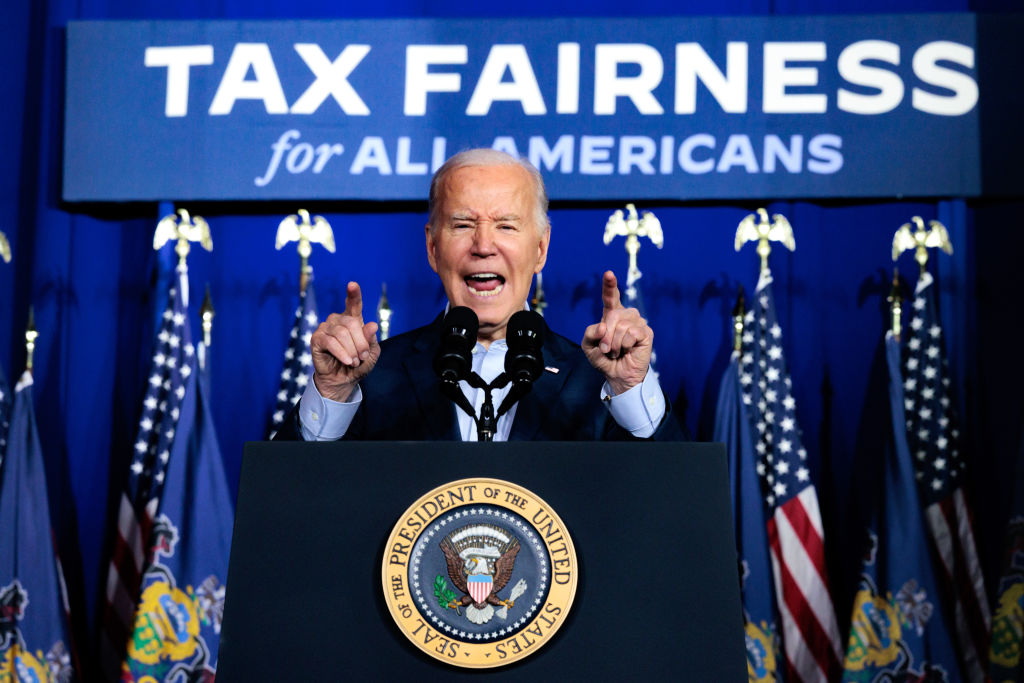
Much ink has been spilled in Washington about whether President Biden should frame his public messaging around the threat that President Trump poses to our democracy or around the “kitchen table” economic issues that Americans care about most. But the reality is that these aren’t separate issues at all. In a well-functioning democracy, our government would deliver the economic policies that its citizens actually want. But right now, when it comes to issues ranging from child care, college, and housing affordability, to a tax code that calls on the wealthy to pay their fair share, that’s simply not happening.
So while President Biden is absolutely right to be sounding the alarm on the clear and imminent threats to our democracy from rising authoritarianism, there’s more he can do to connect the dots for the American public and offer a second-term agenda that takes seriously the relationship between the economy Americans want and the political system that must exist to achieve it.
The Biden Administration’s economic agenda reflects an historic shift in economic governance after decades of failed neoliberalism—an approach that has, in many respects, worked. The labor market is strong, wages are growing at the bottom end of the income distribution–reversing some of the inequality of the past 40 years—and private sector investments in jobs and local communities continue to rise. But despite an economy that economists call “remarkably strong,” recent polls find that most Americans remain pessimistic about the economy and are twice as likely to feel financially insecure than secure.
The economy may be strong on many traditional metrics, but the truth is that Americans have good reason to feel financially insecure. Take child care, for example. Child care is a substantial part of a family’s budget—often more than the average cost of rent or college tuition—and over the past year, the costs of child care have gone up nearly 5%. These costs contribute to Americans’ financial insecurity and the pervasive feeling that, no matter how hard they work, they just can’t get ahead.
President Biden campaigned on an agenda to address rising care costs, and more than 81 million Americans voted him into office, partly on the back of this popular agenda. But our outdated political system failed to deliver. The Build Back Better agenda was stymied by senators representing a minority of Americans—approximately 65 million fewer people than the senators who supported it—leaving millions of families with added costs and financial precarity.
The same can be said of student loan debt. Student loans are one of the highest sources of debt for Americans, second only to mortgages, and eat up a large chunk of borrowers’ monthly incomes. Today, 65% of student loan borrowers report having less than $1,000 in their bank account, struggling to afford short-term expenses and often unable to save over the long term. To ease these economic burdens, President Biden erased trillions of dollars in debt for millions of Americans. But the Supreme Court—now under a controlling majority put there by senators whom most Americans didn’t choose—usurped powers left to the elected branches through most of American history and prevented this popular policy from taking effect.
While President Biden’s economic accomplishments have helped millions of low and middle-income workers and families, much of the agenda he ran on: making it easier for workers to form unions, affordable child care and universal preschool, free community college, and more has been stymied by our outdated political system.
The list of problems with our system is well known. We have wild disparities in representation— California and its 40 million residents get the same number of votes in the Senate as Wyoming and its 600,000—over indexing the power of a white, rural minority and diluting the power of Black and Latino and the multiracial majority that lives in cities, especially those who can’t buy access through campaign contributions. We use an 18th-century electoral college system that has delivered the presidency to the candidate with fewer total votes twice in this century alone. Our Supreme Court is wildly out of step with the American people and controlled by justices who have their jobs thanks to presidents and senators who don’t represent the political will of most Americans. Taken together, Americans are less financially secure today than they would have been if our political system could translate the will of the people into real change.
The hard question—for President Biden, for leaders across the political spectrum, and for all of us— is what to do about it. Biden is right to make the “defense, protection, and preservation” of our democracy central to his presidency, and to make plain–as President Franklin Roosevelt has before him–that, in order to do that, "democracy has to deliver for regular people.” This is absolutely necessary–but requires more than rhetoric.
The Biden Administration’s second-term agenda must take seriously the relationship between the economy Americans want and the political system that must exist to achieve it. To make the shift toward the new economics complete, the Biden Administration must contemplate real changes to our democratic system–like changes to the federal courts, to the Senate, and toward a system of proportional representation, among others. Continuing to connect the dots between the economy and our democracy is an important first step.
More Must-Reads from TIME
- Donald Trump Is TIME's 2024 Person of the Year
- Why We Chose Trump as Person of the Year
- Is Intermittent Fasting Good or Bad for You?
- The 100 Must-Read Books of 2024
- The 20 Best Christmas TV Episodes
- Column: If Optimism Feels Ridiculous Now, Try Hope
- The Future of Climate Action Is Trade Policy
- Merle Bombardieri Is Helping People Make the Baby Decision
Contact us at letters@time.com